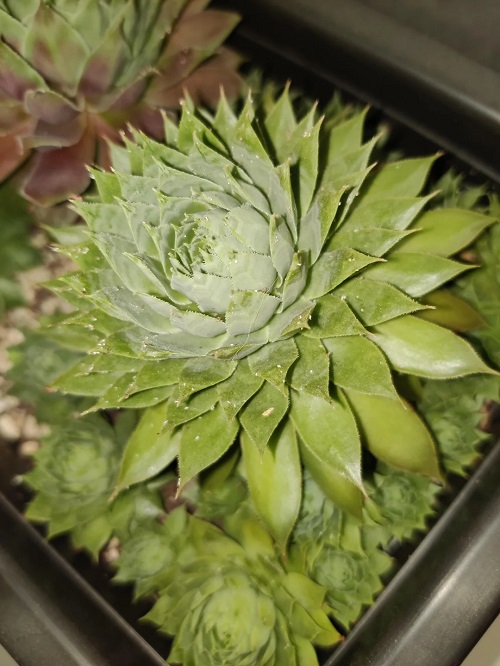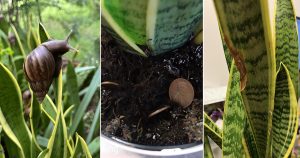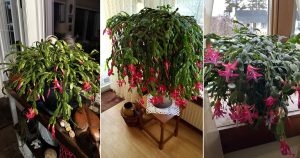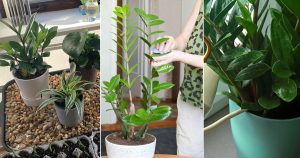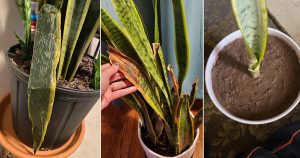Eager to know why your Sempervivum leaves curling down? Find out the reasons along with their solutions, right here!
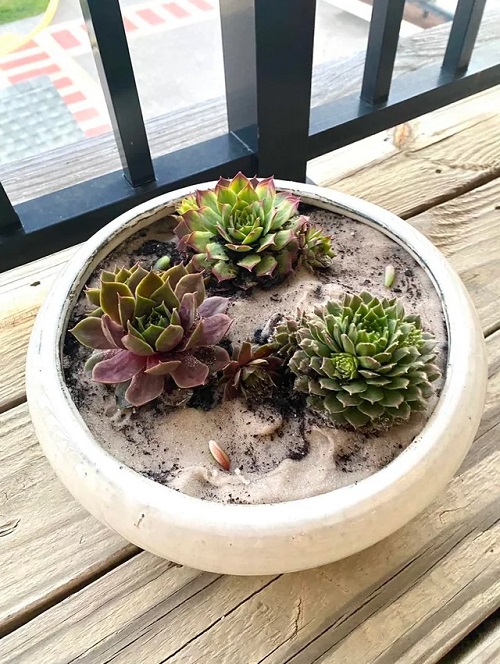
Noticing your Sempervivum’s leaves curling down can feel like a red flag, but don’t worry—it’s often the plant’s way of telling you something’s off. Hens and Chicks are popular for their hardiness, but they’re not completely immune to curling leaves. But, the good news is that with the right care you can bring your plant back to its happy, healthy self.
Why Are My Sempervivum Leaves Curling Down? Problems & Solutions
1. Not Enough Light
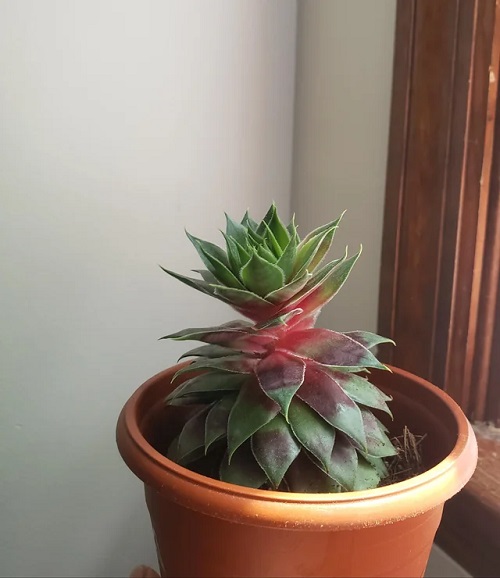
Sempervivums love sunlight, but they need it just right. When you see the leaves curling down, it’s usually a sign that they’re stretching toward the light in a rather desperate attempt to soak in more rays.
How to Treat
To fix this, place your plant in a spot where it can enjoy at least six hours of bright, indirect sunlight every day. If you’re growing them indoors, put them near a south-facing window. In low-light seasons, like winter, you might want to use a grow light to keep them happy.
Note: Just remember, direct afternoon sunlight can be too harsh and might scorch the leaves, so avoid that.
2. Water Imbalance
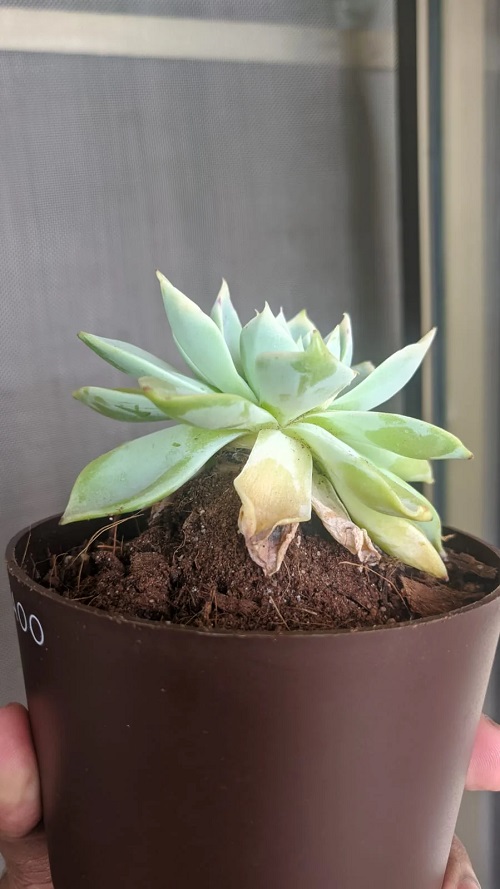
Too much or too little water can send your Sempervivum into stress mode. When they don’t get enough water, their leaves curl tightly, trying to hold on to what little moisture they have. On the flip side, overwatering can make them curl too, and you may see signs of rot.
How to Treat
The key here is balance. Water your plant deeply but wait for the soil to dry out a bit before the next round. You want the soil to be slightly damp but never soggy. Overwatering is a common mistake, so make sure your pot has good drainage, and if the plant is outdoors, avoid watering too much during rainy spells.
During warmer months, it’s best to water in the early morning or late evening to avoid leaf burn from the midday sun.
3. Temperature Stress
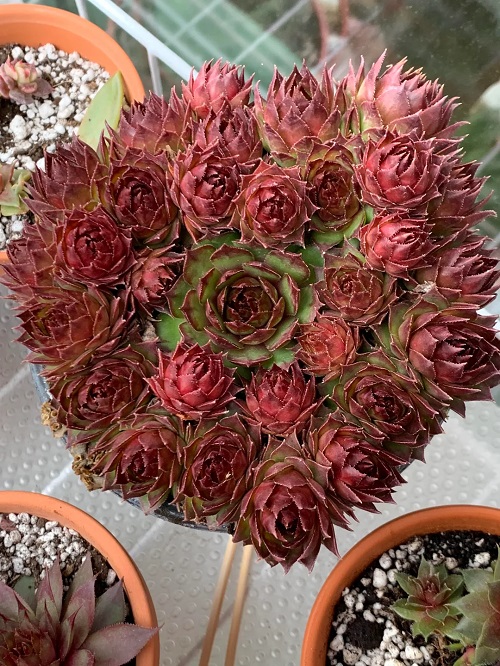
Sempervivums are hardy, but extreme temperatures can cause their leaves to curl down. If it gets too hot, the plant tries to reduce exposure by curling its leaves inwards. On the other hand, if it’s too cold, they might curl down as a defense mechanism.
Interestingly, Sempervivums can also change color in response to cold stress. When exposed to colder temperatures, the plant can develop red or purple tones, which is completely normal and often seen as a beautiful transformation.
How to Treat
So, you have to keep your plant in a stable temperature range between 60-80°F (16-27°C). If outdoors, protect them from harsh midday heat with a little shade and shelter them from freezing temperatures. And, for indoor plants, keep them away from drafts, heaters, or air conditioners to maintain a stable environment.
The color change during cold months is not harmful, but if you’re looking for that lush green, make sure the temperature stays in the ideal range.
4. Soil or Root Issues
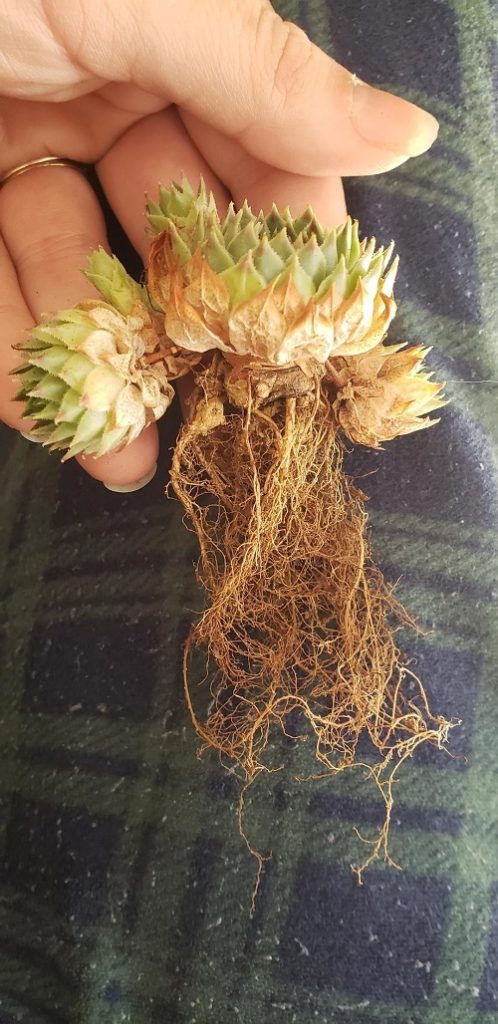
Healthy roots equal a healthy plant, so when there’s a problem with the roots or If the soil isn’t draining well, it shows up in the leaves. Root rot from overwatering or being root-bound can stress the plant, leading to curling leaves as the plant struggles to get the nutrients it needs.
How to Treat
If you are in doubt of root or soil issues, gently remove the plant from its pot and check the roots. Healthy roots should be white and firm. If they’re mushy and brown, you’ve got a case of root rot, and it’s time to trim the damaged roots and repot in fresh, well-draining soil. Also, as a cramped root system can also lead to problems, ensure that the pot isn’t so small for the plant but doesn’t go too big, too!,
5. Monocarpic Death
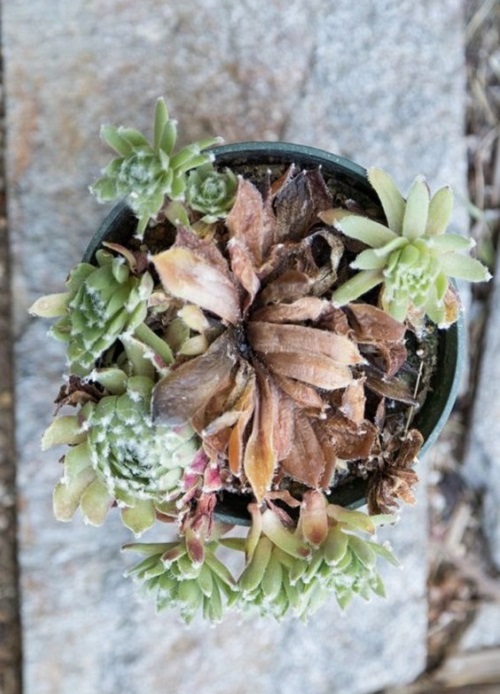
Now here’s something many don’t know—Sempervivums are monocarpic, which means they die after flowering. When a plant prepares to bloom, the leaves can curl down as the energy is directed to the flower.
How to Treat
If your Sempervivum is flowering, this is a natural part of its life cycle. After it flowers and dies, it will leave behind offsets or “chicks” that will continue to grow. So, don’t be upset—you’re not losing your entire plant! You can propagate the chicks and start fresh.
6. Pests and Diseases
Pests like aphids or mealybugs can also be behind your Sempervivum leaves pointing down. They suck the nutrients from the plant, causing leaves to curl or shrivel.
How to Treat
Inspect your plant closely, especially under the leaves where pests like to hide. If you spot any, try washing them off with a strong stream of water or use insecticidal soap to get rid of them. For a more natural solution, introducing predators like ladybugs can help keep the pest population in check.
Tip: Please keep the plant area clean and dry to prevent pests from setting up shop in the first place.
Final Thought!
There’s no need to panic if your Sempervivum’s leaves start curling down. By checking for the right light, water, temperature, and pest control, you can help your plant bounce back quickly. And if your Sempervivum is flowering, celebrate its cycle of life—those new chicks will carry on the legacy!
Have you experienced leaf curling with your Sempervivum? Share your stories and tips in the comments below—we’d love to hear from you!

